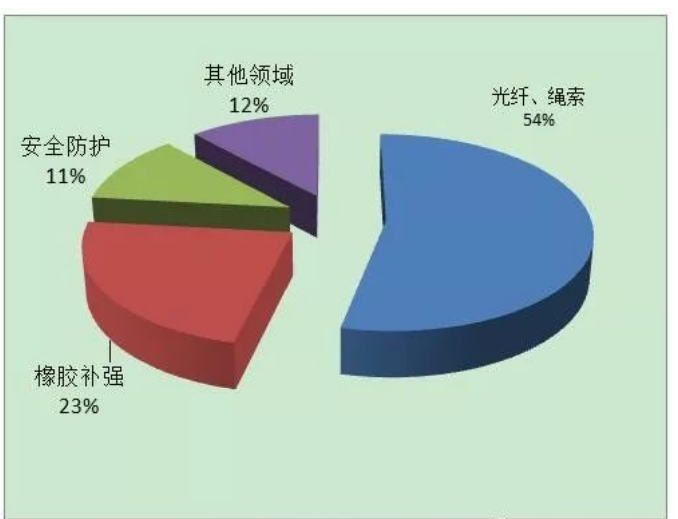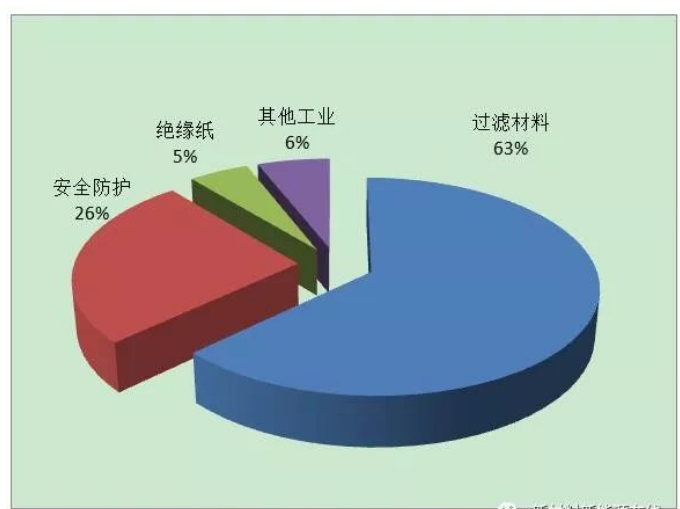Overview of China’s aramid new material market development
Abstract: This article briefly explains Aramid and its performance characteristics, introduces and analyzes the application fields and application distribution of aramid, and the development of China’s aramid market, including my country’s aramid production capacity, aramid The market demand for aramid fiber and the factors restricting the application development of aramid fiber. As the scale of domestically produced aramid fiber expands, the price of aramid fiber decreases, product quality improves, and downstream applications gradually strengthen. In the future, aramid fiber materials will be used in more fields.
Keywords: aramid; performance characteristics; application; market
Market DevelopmentOverview of the aramid in China
Abstract:The characteristics of aramid and its performance are presented. Application areas and Distribution and the development of China’s aramid market are introduced and analyzed. Aramidmaterials will be used in more fields in the future as long as the expansion ofdomestic aramid production scale, decline of the aramid prices, improvement of the product quality, and enhancement of downstream applications.
Keywords: aramid; performance characteristics; application; market
1. Introduction to aramid
Aramid refers to a high-tech synthetic fiber made from aromatic compounds as raw materials through polycondensation spinning. Its full name is aromatic polyamide fiber. In 1974, the U.S. Trade Federation named it “Aramid fiber”, and its definition is: At least 85% of the amide bonds (-CONH-) are directly connected to the carbon atoms in the two benzene rings. At present, the main products that achieve industrial production are meta-aramid (aramid 1313) and para-aramid (aramid 1414).
The molecule of aramid 1313 is a zigzag linear macromolecule composed of amide groups connected to meta-phenyl groups. In its crystal, hydrogen bonds exist on two planes, arranged like a lattice, thus forming a three-dimensional structure of hydrogen bridges. Its chemical structural formula is as follows:

The macromolecular structure of aramid 1414 is an amide bond connected at the para position of the benzene ring, forming an approximately rigid linear structure. Its chemical structural formula is as follows:
2. Main performance characteristics of aramid fiber
2.1 Mechanical properties
Aramid fiber has high strength and modulus. Its strength is 5 to 6 times that of steel wire, and more than 2 times that of nylon and polyester. Its modulus is 2 times to 3 times that of steel wire or glass fiber, and 10 times that of nylon. About times; toughness is 2 times that of steel wire. In addition, aramid fiber is light in weight, its weight is only about 1/5 of steel wire [1]. For details, please refer to Table 1 below. 2.2 Heat resistance
Aramid fiber has long-term thermal stability. Aramid 1313 has almost no loss of strength at 130°C. It can be used at 220°C for more than ten years. At 260°C for 100 hours, the mechanical strength still maintains 65% of the original value at 400°C. Begins to carbonize without melting. The heat resistance of aramid 1414 is better than that of aramid 1313, with a shrinkage rate of 0 at 150°C and no decomposition or melting at a high temperature of 560°C [2]. The strength and modulus of nylon and polyester decrease as the temperature increases [3]. The thermal performance indicators of each fiber material are shown in Table 2 [1] below.
2.3 Flame retardant performance
Usually the oxygen content in the air is 21%, but the limiting oxygen index of aramid 1313 is greater than 28%[2], and the limiting oxygen index of aramid 1414 is about 30%[4]. It is a flame-retardant fiber, so it will not be exposed in the air. It burns and does not support combustion. It is self-extinguishing and does not produce molten droplets. When encountering extremely high temperatures, the fibers will rapidly expand and carbonize, forming a unique thermal insulation layer that can block external heat from entering the interior and play an effective protective role. [5]. This inherent characteristic derived from its own molecular structure makes aramid permanently flame-retardant and has the reputation of “fire-proof fiber”.
2.4 Chemical corrosion resistance
Aramid fiber has excellent chemical corrosion resistance. Usually, the performance of aramid fiber will be significantly affected only if the aramid fiber is exposed to a relatively high concentration of acid or alkali solution for a long time [1]. Also, aramid is not sensitive to mold or rust.
2.5 Electrical insulation
The electrical conductivity of aramid fiber is very low, and because the fiber has poor hygroscopicity, it can maintain excellent electrical insulation properties in high and low temperature and high and low humidity environments. The breakdown voltage of insulating paper made of aramid 1313 can reach 100kV/mm[6]. The resistance of aramid 1414 reaches 5×1014Ω/cm[7]. Due to its excellent electrical insulation properties, it has good application prospects in the electronic and electrical fields.
In addition to the properties introduced above, aramid cord also has good aging resistance, wear resistance and radiation resistance. As a type of high-performance material, the excellent properties of aramid fiber have been developed and applied in different fields.
3. Application of aramid fiber
3.1 Introduction to application fields
3.1.1 Military and defense fields
Aramid composite materials can be used to manufacture missile solid rocket motor casings, pressure vessels, spacecraft cockpits, submarines, bulletproof armored vehicles, bulletproof cash transport vehicles, bulletproof plates, bulletproof helmets, body armor, etc.

�/Terephthaloyl chloride, taking terephthaloyl chloride as an example, the total reaction formula is as follows:
In this process, except for normal losses during the purification process and reaction process, there is no waste. It is a completely green chemical process. After more than a year of trial production, Fangyuan Chemical’s aramid raw material phthalyl chloride process has been fully completed. Key indicators: Selectivity and yield both meet or exceed design requirements. Product quality far exceeds the existing industry standards of 99.90% qualified products and 99.95% superior products, and product purity reaches 99.98%. The production cost is more than 35% lower than the current production cost of all domestic manufacturers. The drop in the price of bis(chloroformyl)benzene will directly lead to the drop in the price of aramid fiber, which will eventually drop to 60,000 to 70,000 yuan/t, allowing the downstream application market that is extremely price-sensitive to grow rapidly.
Five summary
As a new type of high-performance special fiber, aramid has broad development prospects in many industries. At present, my country’s research and development of aramid production and application has achieved certain results. However, compared with foreign aramid, there are still some shortcomings, such as small production scale, few varieties and specifications, and small options for engineering application design. . Due to extremely high manufacturing technical barriers and intellectual property protection, the production technology of aramid and its downstream products has long been monopolized by foreign companies. The export of high-end products is strictly controlled by the U.S. and Japanese governments. At this stage, my country’s aramid The products are mainly low-end products, such as high-temperature filter materials, which have greatly restricted the development of my country’s national defense, aerospace and aviation industries.
As the scale of domestically produced aramid fiber expands, the price of aramid fiber decreases, product quality improves, and downstream applications gradually strengthen. This development trend will surely drive the application of aramid fiber in various fields. In addition, with the country’s advocacy of environmental protection concepts and the pursuit of high quality, high strength and longevity of products, aramid materials will be used in more fields in the future.




